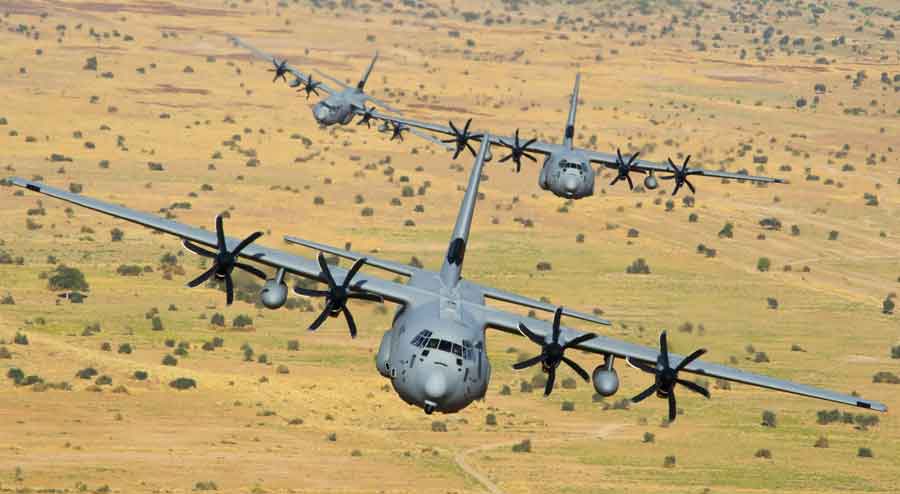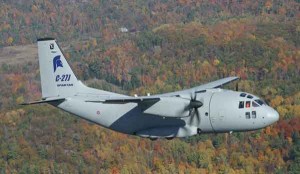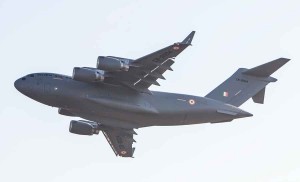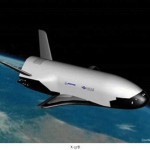Tactical Troubles
Overall, the strategic end of the airlift spectrum looks reasonably healthy. If the government clears the IAF’s demand for another six C-17s, the strategic fleet will consist of 16 C-17s and perhaps eight to ten IL-76s. A dozen C-130s, meant primarily for Special Operations can also shoulder some strategic tasks if required. At least 45 MTA, perhaps another 45, have about ten years in hand to replace the 104 upgraded An-32s. These MTA too lie close to the strategic end of the scale. But once the An-32s are retired from service the low-end tasks need to be carried out by purely tactical transport aircraft – medium-lift planes of about five to ten tonne payload capacity that will ultimately replace the HS 748 Avro.
The C-295 is a twin-turboprop tactical transport aircraft manufactured in Spain…
So what is the IAF doing about it? A global tender valued at about $2.5 billion for the supply of 56 aircraft to replace the Avro fleet was floated in May 2013. The Request for Proposal (RFP) was sent to eight foreign manufacturers – Casa/EADS, now renamed Airbus Military (Spain), Alenia Aermacchi (Italy), Boeing and Lockheed Martin (United States), Antonov (Ukraine), Ilyushin (Russia) and Embraer (Brazil). The RFP specifies a twin-engine cargo aircraft with six to eight tonne payload capacity, a cruise speed of 800km/h and a range of 2,500 to 2,800 km. It envisages buying these aircraft from a foreign Original Equipment Manufacturer (OEM) who must tie up with one or more Indian private sector players and nominate an Indian Production Agency (IPA). It specifies that 16 aircraft will be bought off-the-shelf from the selected vendor while 40 must be produced in India. Of these 40, the first 16 need to have 30 per cent indigenous content and the remaining 24 must have 60 per cent indigenous content. Because HAL is already overloaded with commitments, the idea was to encourage India’s private sector also to get involved in the aerospace industry.
However, there are reports that Indian industry finds the order of 56 too small to justify the capital expenditure that would be incurred in setting up a new production line, especially in the absence of clarity about what would happen after completion of this order. And just weeks before the RFP’s extended deadline of December 08, 2013, Praful Patel, Union Minister of Heavy Industries & Public Enterprises, opposed the deal on the grounds that Public Sector Undertakings (PSUs) were being denied an opportunity to compete for the order. The IAF has since extended the deadline to March 08, 2014. However, as Mr Chandrajit Banerjee, Director General, Confederation of Indian Industry (CII) rightly points out, “Hindustan Aeronautics Limited (HAL) or any other Defence PSU, as an entity, has not been excluded from the participation in the project. Moreover, HAL is free to tie up with private sector companies who would be the Indian Production Agency (IPA).” He goes on to warn that revisiting the programme, at this advanced stage, will not only stall this project but also discourage private industry from investing in defence projects.
The Avro replacement scheme is perhaps the only viable entry-level project for India’s private industry. It is neither a strategic project nor is advanced technology required; hence it will not benefit HAL in any way. HAL has its hands full with numerous contracts and is rarely able to meet its obligations in terms of quality and timelines, resulting in huge cost overruns for the IAF. Competition serves to make the industry more efficient and will strengthen the military-industrial base in the country which, at present, is woefully weak.
Some experts believe that India’s private aerospace industry is at least half a decade away from being able to undertake complete assembly and systems integration for a medium-sized transport aircraft. Production delays are also possible since the aircraft would be produced by an inexperienced private sector company for the first time. But since the IAF has initiated the process well in advance, it would not be left high and dry.
The C-27J Spartan is also a twin-turboprop, an advanced derivative of Alenia Aeronautica’s G.222…
What Is On Offer?
With some luck, this wrangle will be resolved and the IAF can get on with the more important task of considering its options. The two main contenders are Airbus Military’s C-295, and Alenia Aermacchi’s C-27J Spartan.
The C-295 is a twin-turboprop tactical transport aircraft manufactured in Spain. It is a rear-ramp aircraft and has proved popular with a number of military forces around the world. It can carry 71 troops or a payload of 9,250 kg. It has a maximum take-off weight of 23,200 kg, cruise speed of 480 km/h, and range of 1,300 km with full payload. It is fairly close to the Avro in size and capability. Airbus Military has also launched the uprated C-295W with winglets and more powerful engines with an eye on the Indian market.
The C-27J Spartan is also a twin-turboprop, an advanced derivative of Alenia Aeronautica’s G.222. It has a capacity of 60 troops or 46 paratroops or a payload of 11,500 kg. Its maximum take-off weight is 30,500 kg. It has a cruise speed of 583km/h and a range of 1,852 km with 10,000 kg payload.
Neither of the two frontrunners has the desired cruise speed of 800km/h and range of 2,500-2,800 km. But these parameters are somewhat unrealistic, especially for a turboprop, and may need to be lowered. The C-295 is cost-efficient to operate, and the manufacturer promises large savings over comparable aircraft over its lifetime. The C-27J offers enough width and floor strength to handle loads like vehicles and small helicopters, though it is shorter than the C-295 and can carry fewer cargo pallets. Since it has some commonality with the IAF’s C-130 fleet, maintenance should be more economical. However, Alenia’s parent company Finmeccanica is under investigation for kickbacks and unless it is quickly cleared, this deal seems rather unlikely.
Most of the world’s air forces are tactical by definition…
The chances of the other contenders are even slimmer. Ukraine’s Antonov An-148 regional jet is a possibility. It can carry a mix of passengers and up to nine tonnes cargo and has a number of other customers around the world, including countries with comparable climate variations and high altitude terrain. However, it reportedly has high operating costs and some reliability issues. Russia’s Ilyushin IL-114 and Sweden’s Saab 2000 turboprops have also been mentioned. But since they are currently out of production their chances are bleak.
The Perils Of Tactical Neglect
Most of the world’s air forces are tactical by definition. Even those that have strategic capability cannot disown their tactical antecedents because a purely strategic force cannot meet the range of contingencies that may warrant the use of air power. Indeed, the bulk of routine transport missions fall within the purview of tactical transporters. While the total airlift capability of the IAF must necessarily be high, as must be the total number of aircraft available, the medium and light tactical transport segment cannot be neglected. Otherwise large and costly aircraft may be misused to transport smaller loads more suited to a tactical airlifter.
A balanced transport fleet – in which heavy and medium lift as well as light aircraft are in adequate numbers – is essential to enable the IAF to meet the wide variety and scope of tasks that may land on its plate. That is why although the service is justifiably proud of its recent big-ticket strategic airlifter inductions it cannot lose sight of the fact that it is in danger of becoming unbalanced.
The Avro replacement requirement has been pegged at 56, purely to replace the IAF’s existing fleet. This demand is contingent on sufficient MTA being produced to replace the An-32s. The MTA themselves are of higher payload capacity so the need for light aircraft may actually increase, to cater to lighter loads. In time, therefore, this Avro replacement fleet may need to be doubled. There may also be other orders, perhaps from the other defence services and paramilitary organisations, even civil regional airlines. It could eventually make a large total. However, the private sector needs to be given some such assurance in order to help the project take off.
Although it is certainly important to have an indigenous aerospace production base, a monopoly (as HAL has enjoyed so far) is not conducive to efficiency. Some private sector competition might help HAL to shape up, as state-owned Air India is doing after the entry of private airlines. However, if no foreign entity is willing to enter the Indian defence market by tying up with Indian industry, the Avro replacement process needs to go ahead in any case by purchasing a suitable tactical transport aircraft off the shelf. The IAF’s requirement is urgent and cannot be delayed much longer lest safety issues begin to emerge with the ageing Avro fleet.








Sirjee thoda sa Air Force, navy ke tareh dhakka lagana bhi toh suru karen..iss desh mein proposals sirf bana kar dene se kuch nahin hota sir, dhakka de ke age badhana padta hai…fb par iss se zyada kuch likhna theek nahin hoga.
That’s the irony both Navy and Air Force are mordernising as if India’s the next super power; strategic levels but then the army which has to do the dirty job on the ground does not have modern rifles to talk a few. Ironic that Air Force was ineffective in 62 ops and also Kargil one shudders are we going the 62 way again by ceating organisations that have little relevance in our domestic need time for ppl to wake up and ensure that growth is even
Is Indian Army on board on these strategic and tactical transporter. After all it is the Army who has to do the job after getting transported!
Close Air Support is a big issue. Not surprisingly IAF does not even use the word CAS, they use some other fancy words like counter surface force operations , Look at US , what is happening when they thought of abandoning A10 WARTHOGS. Also see the number of aircrafts US Navy or US Army have.
Developing a tactical transport aircraft is well within our capability.
A good progression from the NWFP days of 1930 when they were purely an extended artillery. But, now the CAS (Close air support ) arena has a major void. A-10 of USA being mothballed. Need to get them for CAS.
Well the article sounds like the review of a transport company which talks in terms of haulage and tonnage. The real issue is that has the Air Force worked on what is the requirement of the Army in terms of operational issues. Sadly the two ends; the Army and the Air force don’t meet on these issues. The Air Force runs its own agenda with its own mind set of what military operational requirements are. With 12 C-130 and 16 C-17s will they be able to drop an Airborne Battalion. No the reason is that to drop a battalion you need heavy drop capabilities and allied equipment. There are other factors that need to be considered are the Parachutes and the Army’s requirement of heavy drop equipment. Even when the Air Force had 120 AN-32s they couldn’t make enough aircraft available to drop a full scale Battalion which required about 50 + An 32’s. Remember India has a Parachute Brigade which is fully geared or Airborne Operations and the only drawback is that the Air Force doesn’t have Aircraft to drop a Battalion on full scale. So therefore let’s not create an inventory list with having different kinds of aircraft. The idea is to deliver what the Army wants and not what the Air Force thinks. Imagine an Airborne stream of C 130’s C17’s and AN32’s . The technicalities involved. The whole issue of having strategic lift capabilities and Airborne Operational capabilities needs a deeper understanding.